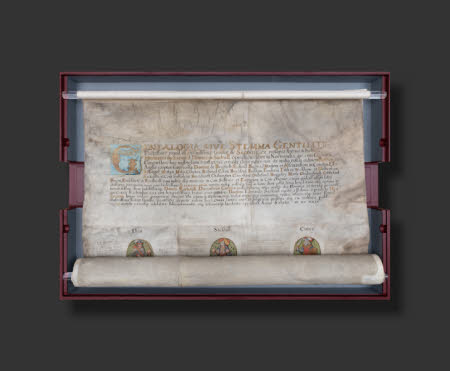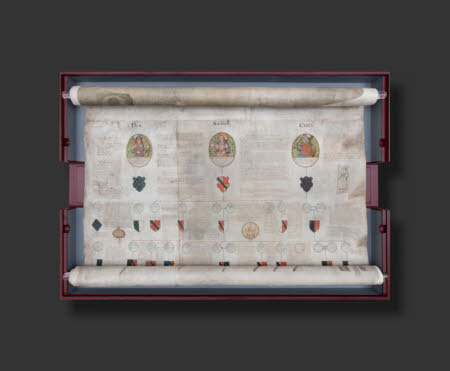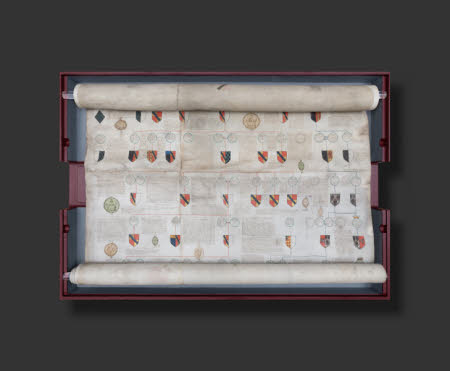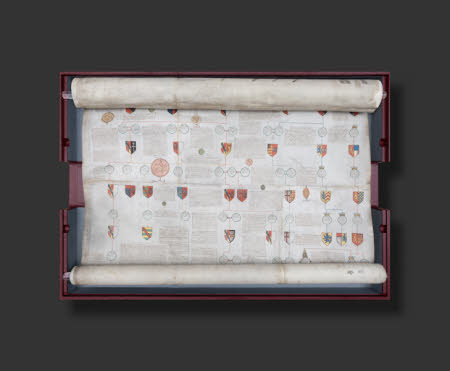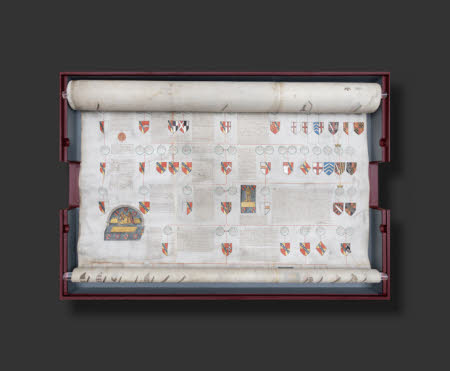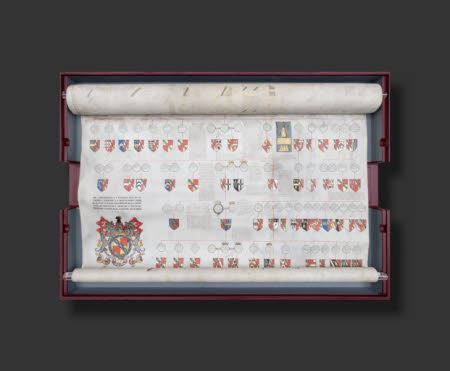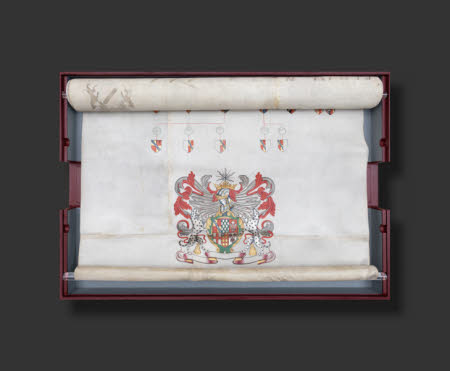Family pedigree
Category
Manuscripts and documents
Date
c. 1622
Materials
Parchment
Measurements
1780 x 989 x 429 mm
Order this imageCollection
Knole, Kent
NT 129692
Summary
An illuminated pedigree, or family tree, made for the Sackville family in about 1622. The pedigree is illustrated on parchment in black and coloured ink, as well as silver paint. The pedigree begins with a large letter ‘G’ illuminated in blue and gold, followed by a paragraph in Latin about the Sackville family lineage. The document includes illustrations and quotations taken from various sources, including: historical records, church windows and legal documents.
Full description
This pedigree, or family tree, records the lineage of the Sackville family who purchased Knole in 1603. The Sackville pedigree is on parchment which would have been an expensive material in the 17th century. Several sheets of parchment have been joined together to make the roll long and wide enough to represent the entire Sackville family tree from the 1st century to the 17th century. The details and coat of arms were illustrated in coloured ink and silver paint. The inclusion of silver paint indicates that this was an expensive and high-status pedigree. The silver paint at the top of the pedigree has oxidised and now largely appears black. However, towards the end of the table the silver paint is untarnished. Early pedigree rolls in Britain were a simple way to represent biblical genealogies and royal lineage. The early royal pedigrees were like propaganda and sometimes complex and contentious details were omitted. By the 15th century wealthy noble families started to commission these artworks to beautifully record their family tree. Recording a pedigree on a roll, rather than in the leaves of a book, was an easy way to display complex histories in a visually impressive way. At Knole, the Sackville pedigree was displayed in the Leicester Gallery in the 19th century before being removed from display around 1940. The makers of the Sackville pedigree are unknown. However, it would have taken great skill and patience to research, compile and illustrate a pedigree of this scale and complexity. By the end of the 16th century there were numerous arms-painters’ shops in London where wealthy families could commission their family pedigree. Family pedigrees often included illustrations copied from portraits, supporting documents and occasionally architectural details. The Sackville pedigree quotes from sources in Latin, French, German and English.

